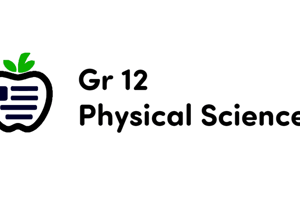Podcast
Questions and Answers
What is the main direction of centripetal acceleration for an object moving in a circle?
What is the main direction of centripetal acceleration for an object moving in a circle?
- Tangential to the motion
- Parallel to the velocity vector
- Inward toward the center (correct)
- Outward away from the center
A displacement vector indicates the total distance covered by an object during its motion.
A displacement vector indicates the total distance covered by an object during its motion.
False (B)
What is the term for the maximum horizontal distance a projectile can travel?
What is the term for the maximum horizontal distance a projectile can travel?
range
The __________ is the instantaneous acceleration expressed in unit vector notation.
The __________ is the instantaneous acceleration expressed in unit vector notation.
Match the following terms with their definitions:
Match the following terms with their definitions:
What is instantaneous acceleration?
What is instantaneous acceleration?
Projectile motion is affected by horizontal acceleration.
Projectile motion is affected by horizontal acceleration.
What is the range of a projectile?
What is the range of a projectile?
In uniform circular motion, centripetal acceleration points toward the ______.
In uniform circular motion, centripetal acceleration points toward the ______.
Which equation is used to calculate the time of flight for a projectile?
Which equation is used to calculate the time of flight for a projectile?
In nonuniform circular motion, both tangential and centripetal accelerations can exist.
In nonuniform circular motion, both tangential and centripetal accelerations can exist.
In projectile motion, the vertical component of initial velocity is represented by ______.
In projectile motion, the vertical component of initial velocity is represented by ______.
What does the velocity vector represent for a particle in motion?
What does the velocity vector represent for a particle in motion?
The displacement vector provides the longest distance between two points on a particle's trajectory.
The displacement vector provides the longest distance between two points on a particle's trajectory.
What is the equation for the time of flight of a projectile?
What is the equation for the time of flight of a projectile?
In uniform circular motion, the total acceleration vector consists of centripetal and __________ accelerations.
In uniform circular motion, the total acceleration vector consists of centripetal and __________ accelerations.
Match the terms related to motion with their definitions:
Match the terms related to motion with their definitions:
Which of the following correctly defines 'trajectory'?
Which of the following correctly defines 'trajectory'?
Motion in one direction is dependent on motion in a perpendicular direction.
Motion in one direction is dependent on motion in a perpendicular direction.
What is the formula for average velocity?
What is the formula for average velocity?
Flashcards
Instantaneous Acceleration
Instantaneous Acceleration
The acceleration of an object at a specific point in time.
Projectile Motion
Projectile Motion
Motion of an object under the influence of gravity only (constant acceleration).
Time of Flight (Projectile)
Time of Flight (Projectile)
The time a projectile takes to reach the ground (same elevation) after launch.
Range (Projectile)
Range (Projectile)
Signup and view all the flashcards
Uniform Circular Motion
Uniform Circular Motion
Signup and view all the flashcards
Centripetal Acceleration
Centripetal Acceleration
Signup and view all the flashcards
Tangential Acceleration
Tangential Acceleration
Signup and view all the flashcards
Nonuniform Circular Motion
Nonuniform Circular Motion
Signup and view all the flashcards
Acceleration Vector
Acceleration Vector
Signup and view all the flashcards
Angular Frequency
Angular Frequency
Signup and view all the flashcards
Relative Velocity
Relative Velocity
Signup and view all the flashcards
Time of Flight
Time of Flight
Signup and view all the flashcards
Total Acceleration Vector
Total Acceleration Vector
Signup and view all the flashcards
Trajectory
Trajectory
Signup and view all the flashcards
Velocity Vector
Velocity Vector
Signup and view all the flashcards
Position Vector (r(t))
Position Vector (r(t))
Signup and view all the flashcards
Displacement Vector (Δr)
Displacement Vector (Δr)
Signup and view all the flashcards
Average Velocity
Average Velocity
Signup and view all the flashcards
Study Notes
Key Terms
- Dynamics: The study of how forces affect the motion of objects and systems.
- External Force: A force acting on an object or system originating outside the object or system.
- Force: A push or pull on an object, measured by magnitude and direction.
- Free Fall: A situation where the only force acting on an object is gravity.
- Free-Body Diagram: A sketch showing all external forces acting on an object or system.
- Hooke's Law: In a spring, the restoring force is proportional to and opposite the displacement.
- Inertia: The tendency of an object to resist changes in its motion.
- Inertial Reference Frame: A reference frame moving at a constant velocity relative to an inertial frame.
- Net External Force: The vector sum of all external forces acting on an object, causing mass to accelerate.
- Newton: SI unit of force, 1 N accelerates a 1 kg mass at 1 m/s².
- Newton's First Law: A body at rest stays at rest or, if in motion, stays in motion with constant velocity unless acted upon by a net external force (Law of Inertia).
- Newton's Second Law: The acceleration of a system is directly proportional to and in the same direction as the net external force acting on the system, and is inversely proportional to its mass.
- Newton's Third Law: For every action, there is an equal and opposite reaction.
- Normal Force: A supporting force perpendicular to the surface of contact.
- Tension: A pulling force acting along a stretched flexible object like a rope or cable.
- Thrust: A reaction force pushing a body forward in response to a backward force.
- Weight: Force due to gravity on an object with mass.
Key Equations
- Net External Force (Fnet): ∑F = F₁ + F₂ + …
- Newton's Second Law (Vector Form): ∑F = ma
- Newton's Second Law (Scalar Form): Fnet = ma
- Newton's Second Law (Component Form): ∑Fx = max, ∑Fy = may, ∑Fz = maz
- Newton's Second Law (Momentum Form): Fnet = dp/dt
- Weight Definition (Vector Form): w = mg
- Weight Definition (Scalar Form): w = mg
- Newton's Third Law Equation: FAB = -FBA
Studying That Suits You
Use AI to generate personalized quizzes and flashcards to suit your learning preferences.



